Picture I took of a
Siberian Iris in the backyard.
It was very labor-intensive, but the reward were delicious organically-grown vegetables and fruit; and beautiful flowers throughout the farm.
Picture I took of a
Tiger lily in the front yard.
Now that I no longer do the camp, having these gardens isn't an option. I need to realistically look at what is possible given my time and energy level. So, I maintain the perennials, but do not plant many annuals any more.
Olivia planting onions and beans in 2011.
The other thing I had to look at this year - after trying to do a vegetable garden last year - was that the trees have grown quite a bit so there are more shady areas now around the farm. This changes the areas where I use to have a vegetable garden.
With that background, here are two tips for no- or low-maintenance gardening:
Support Farmers and Farmers Markets Instead of Having Your Own Garden
This year I chose not to do a vegetable garden. I don't regret the decision for one moment. The time and money I would have invested would have far outweighed what it costs to purchase food farmers markets. I'm also supporting local farmers in a challenging economy. It's a win-win for everyone involved.
These were some of the many vegetables that
Sophia, Olivia, and I saw on a
trip through Rhode Island.
They were at a roadside farmers market.
Plant Conifers
Many years ago, the farm had very few pine trees. There were ones near the home on the north and northwest sides (to act as a windbreak). However, there were very few other large, established conifers here.
So, in the backyard, I had about 8 pine trees transplanted on the east side along the fence line for privacy. There are two different types of pine trees (four of each kind). At the time, they were 10-12' tall. Now, they are significantly taller than that.
Sophia and Olivia by the pines in the backyard.
(The white pines are the ones
with the green and brown needles.)
What the previous owners did that was wonderful was to establish a little nursery in one of the pastures. As the trees started to get larger, I thought it would be good to have them transplanted along the perimeter of the property. There were enough trees to line the east and south sides of the farm. These trees - which were only a few feet high at the time now are at least 15' feet high.
Olivia walking on the nature trail
in one of the pastures.
The pine trees in the distance are all ones
that were transplanted from the little nursery
that the previous farm owners had planted.
My dad and brother also took one of the trees - an Austrian Pine - and transplanted in the front yard by the driveway. Every time I see that tree, I think of my dad and brother. It now towers well above anyone's head.
These trees provide shelter and a place to live for countless song birds as well as pheasants, rabbits, fox, deer, and other wildlife. The variety of songbirds alone has changed dramatically since the trees were transplanted and grown.
Olivia by the Austrian Pine.
What I like about conifers is that they are beautiful at any time of the year.
Pine needles in the winter.
(One of the pine trees in the backyard.)
With four distinct seasons in Minnesota, having a tree that retains its beauty during the coldest months is truly a gift.
The pine trees in the front yard after a frost.
The Austrian Pine is to the far right.
The other pines were here well before
moving to the farm.
These trees also require very little maintenance, making them ideal for those needing and/or wanting a low-maintenance garden and yard.

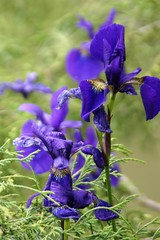

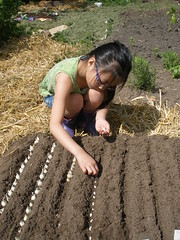

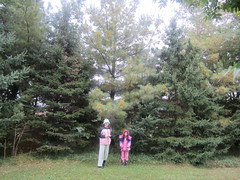
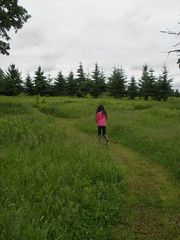
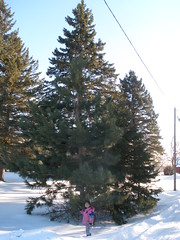

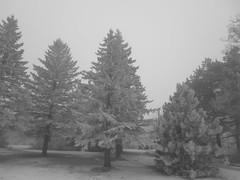

3 comments:
I only plant perennials for I am too frugal to buy flowers. I have a large family who loves to garden and we do a huge seed swap every year (fall). So it's usually my time to get a new flower or too.
wow awesome post!
Next summer I want to grow flowers. I find myself swiping some from family member's gardens when they have really pretty ones. My raised garden bed this year was pretty small- just tomatoes, poblanos, and jalapenos. But since it only seems to be producing jalapenos successfully, I will still be pumping plenty of money into the local farmers market. ;)
Post a Comment